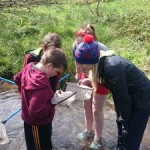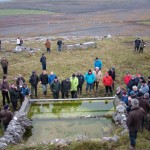The River Loobagh is a tributary of the River Maigue…
Duhallow LIFE: a community led water and nature conservation programme
Sustainable management of water and wildlife often requires the cooperation of local people living within a catchment. Something not always appreciated, however, is that these communities themselves can also positively contribute towards better water management, if encouraged to take a proactive role in the management of their local water resource.
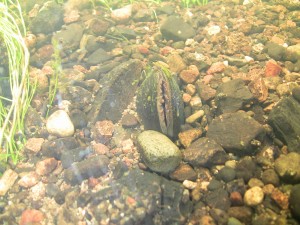
There are a number of Irish examples of projects (e.g. Loobagh, Slaney and Mulkear Rivers) where local people are working on initiatives with others to improve their catchments. This article highlights some of the achievements of a community led EU LIFE funded project, which is focused on the upper reaches of the Munster Blackwater River, in north Cork and east Kerry.
The Blackwater River is one of Irelands largest rivers, extending some 160km from source to sea and draining an area in excess of 3,000km2. The river rises in the mountains of east Co. Kerry, traversing much of Co. Cork and flowing into west Co. Waterford, before entering the sea at Youghal Bay. The river is one of Irelands most important tourist angling rivers and large numbers of anglers travel from the UK and further afield, to stay in local fishing lodges and soak up the beautiful scenery, taking time out from their busy lives to relax and fish. The river is also important for a range of wildlife and together with its tributaries is designated as a Special Area of Conservation. This designation is due to the presence of species of EU conservation importance such as otters, kingfishers, lampreys and salmon. The river is also the largest Special Area of Conservation designated under the EU Habitats Directive for the protection of the rare Freshwater Pearl Mussel in Ireland.
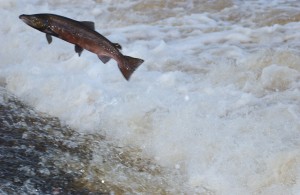
Like so many other Irish rivers, a wide range of pressures have led to a decline in the rivers habitat and water quality. These pressures include changes in the landscape and water quality; forestry, intensification of agriculture, peat cutting, land reclamation, drainage, drinking water and waste water treatment, runoff from increasing road traffic, windfarm development, urbanisation, and septic tanks from rural one-off houses all present challenges to the management of the river. All these pressures are associated with most catchments in modern Ireland and so any conservation or management lessons learnt on the River Blackwater should be relevant for other catchments.
In 2009 the Kanturk Angling Club, who had been carrying out river habitat improvement works, approached IRD Duhallow Ltd, the rural development company active in the area, and the Southern Regional Fisheries Board (now Inland Fisheries Ireland), with a view to develop a large scale project to improve the river for fish. They recognised the need for a broader holistic approach that took in all aspects of the biodiversity along the river, rather than focusing just on fish, and identified the EU LIFE funding mechanism as a possible source of funding.
On consultation with ecologists and people with experience in funding applications, a pragmatic approach was taken, following a simple logic – protect the most sensitive species, the Freshwater Pearl Mussel, and other species such as the Atlantic Salmon and Brown Trout would also benefit. Freshwater Pearl Mussel require pristine habitat and water quality and therefore any efforts to protect them should improve the environment for other coexisting species, including fish. Actions to protect other species such as Kingfisher, Dipper, and Otter were also added to the projects remit to further increase biodiversity improvements and importantly help increase engagement of the wider public. A team was put together and the completed application submitted. The project was awarded funding in 2010.
From the beginning, the project took a peoplecentred view by including the community at its core. In tandem with ten on-the-ground conservation actions, another 19 actions covered project planning and communication with the public and key stakeholders at a range of levels. The project endeavoured to form partnerships with the local landowners, interest groups and state agencies to maximise the projects reach and achieve buy-in by all stakeholders. Regular meetings, public information nights, field trips, door-to-door calls, newsletters, brochures and information signage all went part and parcel with the project, so that that the local community and the wider stakeholder interest groups were kept informed. Much of the project work on the ground was carried out by participants on the Rural Social Scheme and volunteers.
Conservation actions were carried out on a large scale, sometimes spanning the farms of hundreds of landowners. For example, the invasive species Himalayan balsam was removed from almost 40km of river bank. This was conducted annually over a five year period to the point that the plant, once found in very high densities along rivers in the River Allow catchment, is now virtually absent. This was achieved through the mobilisation of large groups of people and through a sustained effort by all involved. It followed a carefully planned strategy, which took into account the stages of development of the plant at different locations along the catchment. It was found that plants in open sunlight areas reached maturity earlier than those in shaded areas and therefore had to be targeted first, before dealing with the slower growing plants in wooded areas. Plants in sunlit areas were found to seed earlier than those growing in more shaded areas. But all the while, the project worked from the source of infestation in a downstream direction, as the seeds themselves are waterborne and can infest a large area downstream of a mature plant. This work was all done by hand, without the use of chemicals and is, as far as we are aware, the largest manual Himalayan balsam control programme of its type in Europe. Full credit to all involved, and despite their initial reservations, the participants, suspended their understandable reservations to go picking flowers and made the control programme a success.
A number of innovations to address specific environmental problems were developed by the project. For example, farming along the catchment occurs within the floodplain, incidentally where some of the best cuts of silage are taken.
However at certain locations due to repeated inundation by water during flood events, it was not practical for farmers to fence the river banks to manage their livestock. These floods carry debris, ranging from rushes to fully grown oak trees, down the river which in turn lodge and build up on the fences eventually breaking them. The inability to fence such areas left the river banks vulnerable to trampling and over-grazing by farm animals. Therefore the LIFE project team developed a novel technique with the local farmers to address this problem; fencing that could be placed along river banks and survive the onslaught of debris carried by regular flooding episodes.
This innovation allowed farmers to maintain their fence line, ensuring that the 38km of fencing placed by the LIFE project will last over time, and can withstand the increasing floods that we are experiencing. Similarly, innovations were developed to trap silt travelling along deeply cut farm drains before it reached the Special Area of Conservation and smother the spawning beds of fish and Freshwater Pearl Mussel habitat.
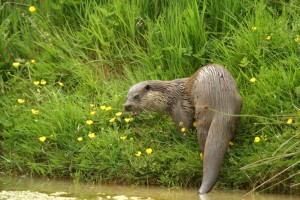
Willow planting techniques using live willow stakes and poles were tested, and a best practice river bank restoration technique was developed to address the more severe river bank erosion situations by working with nature. Thousands of native trees were planted along the river banks to improve tree diversity along the riparian areas and encourage increased root mass to bind the soil in the river banks and improve river bank stability during flooding episodes. All trees were sourced locally, following best practice with regards to provenance, being donated by local people and a Coillte locally managed native woodland estate.
A continuous survey of Freshwater Pearl Mussel was carried out from the upper most point of occurrence all the way downstream to Kanturk town, a river length of over 28km. This is the longest continuous survey of Freshwater Pearl Mussel in the UK or Ireland. All of the records (over 14,000 individual mussels) were mapped on GIS and the data not only helped direct conservation works, but also identified areas affected by acute pollution. The latter was followed up and will be the subject of a separate article in a future issue of this newsletter.
Actions were also carried out to improve the conservation status of Otters, Kingfishers and Dippers by the placement of nest boxes, Otter Holts and brush bundles. These actions not only improved available habitat for these species, but also increased local awareness as local farmers were engaged in discussions with the project team during the construction phase.
Education was a major element of the project. Thirty-six national schools and five secondary schools were visited by the project team and these kids were then bussed to their local stream or river, all tributaries of the Blackwater, for a demonstration by Inland Fisheries Ireland staff on how fish are sampled by electrofishing. Demonstrations were also given on aquatic macroinvertebrates monitoring for the determination of water quality. In addition, the children took part in a fun Nature Detective programme, where they recorded wildlife in their back gardens and farms with their parents, logging their observations into attractive survey booklets provided by the LIFE project.
The data was then uploaded onto an online map hosted on the project website. To increase public engagement, the project was actively promoted on social media. Updates and photographs from our trap cameras were regularly posted and one post of an Otter marking its territory received over 7,000 views, with hits from countries as far away as Mexico.
A major part of the project is that it now serves as a demonstration project to illustrate what can be done to improve nature conservation by working with farmers at the practical level on the ground. The demonstration farms provide real world examples of how nature and farming can co-exist in relative harmony rather than in perpetual conflict.
The ethos of IRD Duhallow, which aims to improve not only the economy of the rural area but also the social, cultural, heritage and environment of local people, means that the project will continue to evolve and improve, and hopefully not only deliver a positive impact to the local environment but also provide insights for those with interest in sustainable management and nature conservation in Ireland.
The IRD DuhallowLIFE project ran from 2010 to 2015 and is now into its afterLIFE phase. This is the phase in which the partners commit to continue the work originally supported by the LIFE fund of the European Union. This project is the first community led EU LIFE Nature project in Ireland and has now been augmented by a second project, RaptorLIFE which is not only targeting conservation actions at other tributaries on the Blackwater SAC but also towards the upland landscape to improve habitat for fish and birds of prey. A major element of this work is the removal of invasive species such as Japanese knotweed, removal of invasive conifers and other non-native species, and working with upland farmers.
Large scale projects, such as LIFE projects in themselves can deliver significant results on the ground, but they are also catalysts towards better environmental management, as it is only through the constant partnership working and evolution of ideas and solutions that the challenges of nature and water conservation and sustainable living can be achieved. So I imagine the afterLIFE phase of these projects will continue for some time to come and will need to be nurtured into the longer term to deliver their true potential.


